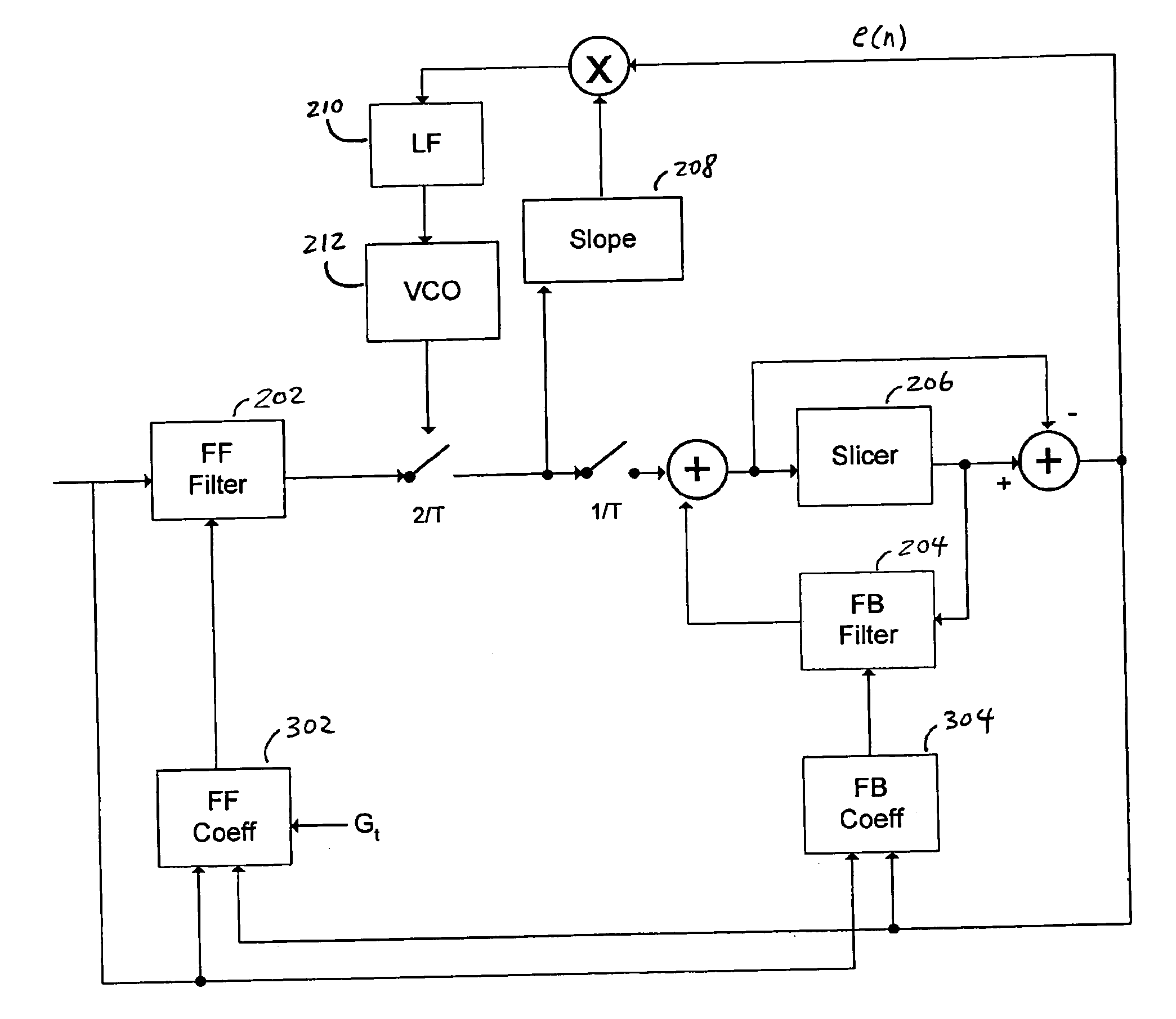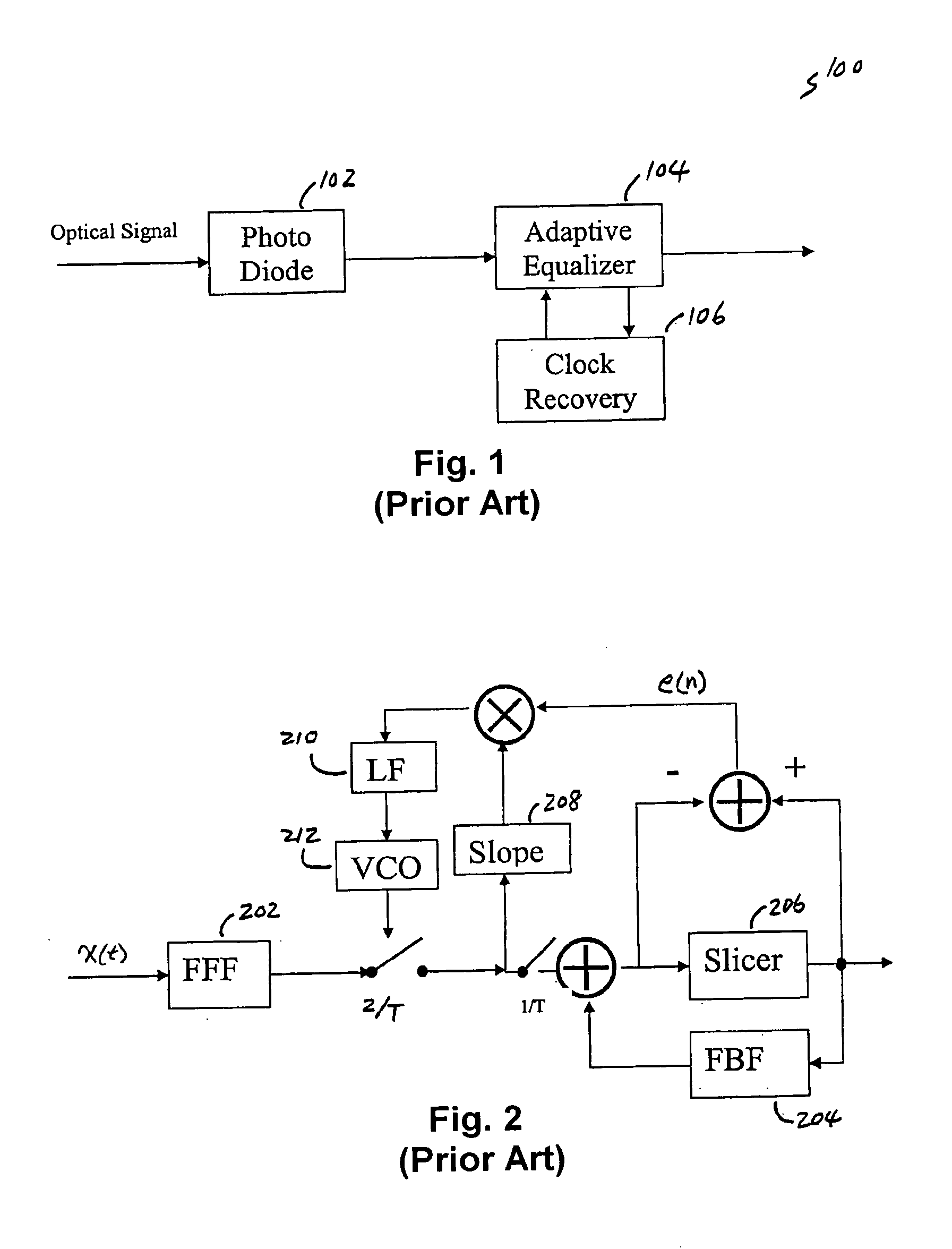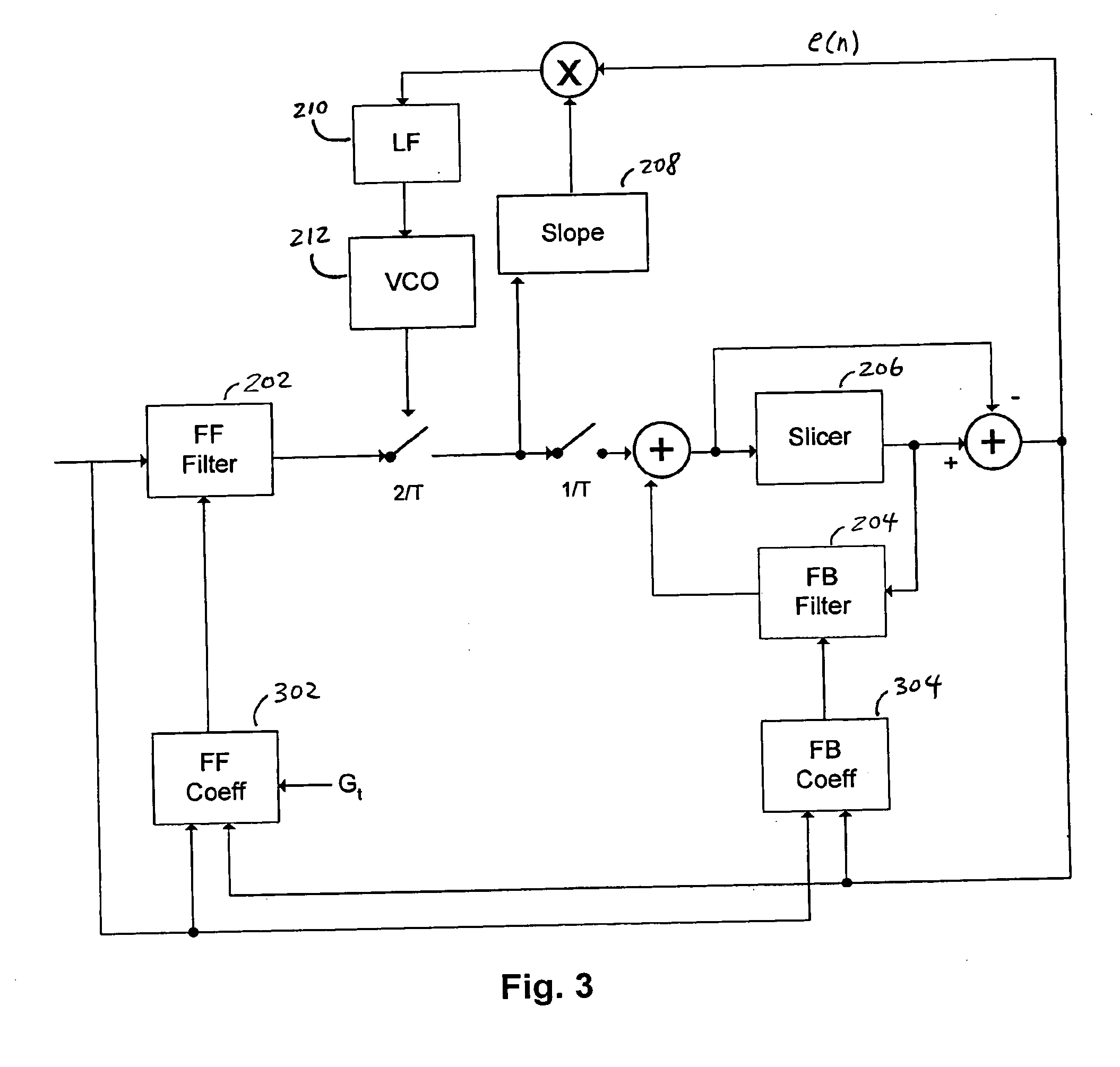Adaptive equalization with group delay
a group delay and equalization technology, applied in the field of adaptive equalization with group delay, can solve the problems of group delay distortion, frequency-related attenuation, noise and bandwidth limitations of typical optical networks, etc., and achieve the effect of reducing undesired interactions
- Summary
- Abstract
- Description
- Claims
- Application Information
AI Technical Summary
Benefits of technology
Problems solved by technology
Method used
Image
Examples
Embodiment Construction
[0023]FIG. 3 is a block diagram of a portion of a receiver containing an adaptive equalizer coupled to a clock recovery circuit that minimizes mean square error (MMSE), wherein the adaptive equalizer takes into account filter group delay to reduce mutual interference with the clock recovery circuit, in accordance with one embodiment of the present invention. As previously illustrated in FIG. 2, the adaptive equalizer is a decision-feedback equalizer (DFE) that utilizes both feed-forward filter 202 and feed-back filter 204, as well as slicer 206. The clock recovery circuit utilizes slope estimator 208, low-pass filter 210, VCO 212, and slicer 206. A feed-forward coefficient unit 302 automatically adjusts the coefficients, or taps, of feed-forward filter 202 in order to optimize one or more performance measures. Here, feed-forward coefficient unit 302 updates the coefficients of feed-forward filter 202 using an approach based on the least-mean-square (LMS) algorithm. Thus, for each ta...
PUM
 Login to View More
Login to View More Abstract
Description
Claims
Application Information
 Login to View More
Login to View More - R&D
- Intellectual Property
- Life Sciences
- Materials
- Tech Scout
- Unparalleled Data Quality
- Higher Quality Content
- 60% Fewer Hallucinations
Browse by: Latest US Patents, China's latest patents, Technical Efficacy Thesaurus, Application Domain, Technology Topic, Popular Technical Reports.
© 2025 PatSnap. All rights reserved.Legal|Privacy policy|Modern Slavery Act Transparency Statement|Sitemap|About US| Contact US: help@patsnap.com



